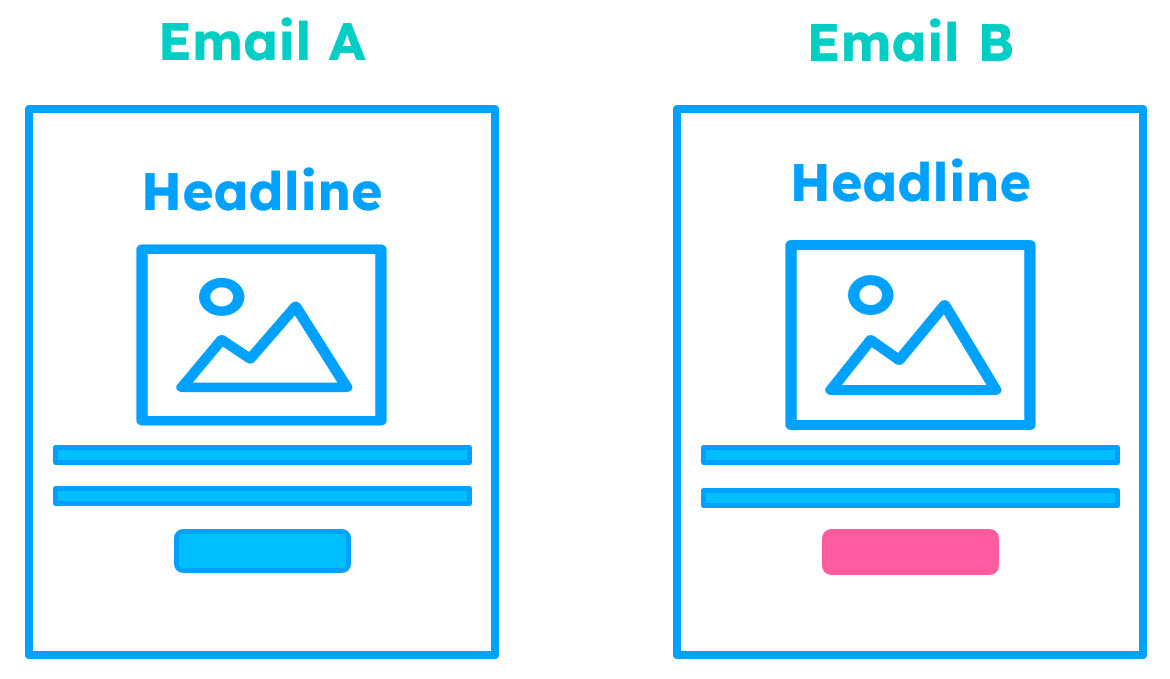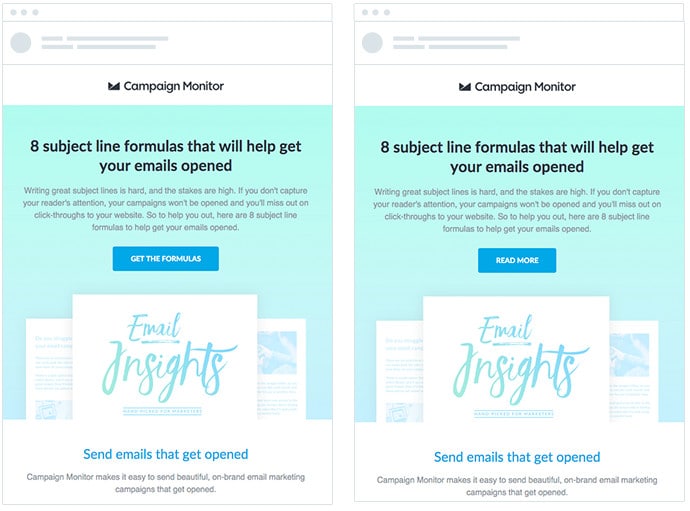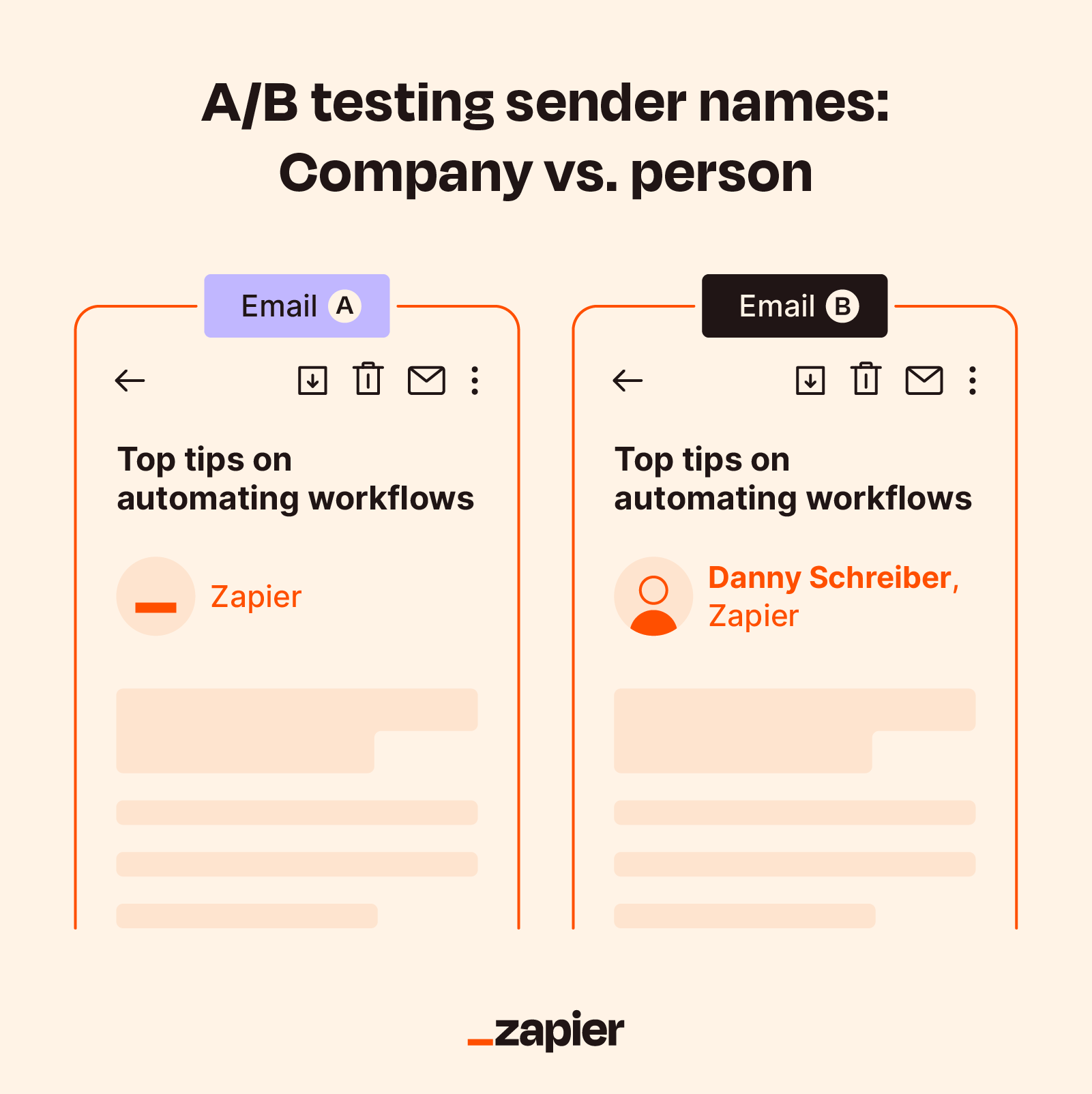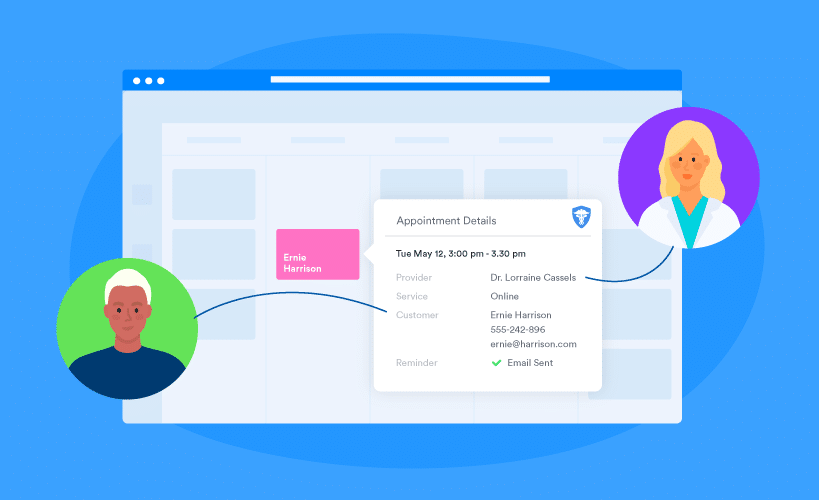A/B testing is a crucial tool in email marketing. It helps determine what works best.
What Is The Purpose Of AB Testing In Email Marketing? In email marketing, reaching your audience effectively is key. But how do you know if your email is hitting the mark? That’s where A/B testing comes into play. By comparing two versions of an email, marketers can see which one performs better.
This method helps improve open rates, click-throughs, and conversions. In this blog post, we will explore the purpose of A/B testing in email marketing. You’ll learn why it’s important and how it can benefit your campaigns. Stick around to discover how A/B testing can enhance your email marketing strategy.

Credit: www.constantcontact.com
Introduction To Ab Testing
AB Testing, also known as split testing, is a method used to compare two versions of an email to see which one performs better. It helps marketers understand what works best for their audience. By sending different versions to small groups, they can measure which email gets more engagement. This method allows for data-driven decisions in email marketing campaigns.
Basics Of Ab Testing
AB Testing involves creating two versions of an email. Version A is the control, and Version B is the variation. Marketers send these versions to two small groups from their audience. They then measure the performance based on metrics like open rates or click-through rates. The version with better performance is sent to the rest of the audience. This process helps in identifying which elements resonate more with the readers.
Importance In Email Marketing
Email marketing relies heavily on engagement. AB Testing helps in improving this engagement. By testing different subject lines, content, or visuals, marketers can find out what attracts their audience the most. This leads to higher open rates and better conversion rates. It also helps in reducing the guesswork in email marketing strategies. Data from AB Testing provides clear insights into audience preferences. This makes email campaigns more effective and targeted.
Setting Goals For Ab Testing
Setting goals for AB testing is a crucial step in email marketing. Without clear goals, it becomes hard to measure the success of your tests. This section will guide you through defining objectives and measuring success in AB testing.
Defining Objectives
First, decide what you want to learn from your AB test. Are you testing subject lines, email copy, or call-to-action buttons? Each test should have a clear objective. This helps you focus and get meaningful results.
Common objectives include increasing open rates, click-through rates, or conversion rates. Choose one goal for each test. This makes it easier to analyze the results and see what works best for your audience.
Measuring Success
Once you have defined your objectives, you need to measure success. Use metrics that align with your goals. For example, if you are testing subject lines, focus on open rates.
For call-to-action buttons, click-through rates are important. Use email marketing tools to track these metrics. Make sure you run your test long enough to get reliable data.
Compare the performance of your test versions. The version that performs better helps you understand your audience’s preferences. This information is valuable for future email marketing campaigns.
Creating Variations
Creating variations in AB testing for email marketing involves experimenting with different elements of your emails. The goal is to identify what resonates best with your audience. This section delves into creating variations in two critical areas: Subject Lines and Content Layout.
Subject Lines
Subject lines are the first things your audience sees. They play a crucial role in whether your email gets opened. Here are some ways to create variations in your subject lines:
- Length: Test short vs. long subject lines.
- Personalization: Use the recipient’s name vs. not using it.
- Urgency: Add a sense of urgency vs. a neutral tone.
- Question vs. Statement: Use a question vs. a statement.
Experimenting with these elements can help identify which subject lines attract the most opens.
Content Layout
The layout of your email content impacts readability and engagement. Here are some ways to create variations in your content layout:
- Text vs. Images: Balance text and images differently.
- Single Column vs. Multi-Column: Test a single column layout vs. a multi-column layout.
- Call to Action (CTA) Placement: Move your CTA button to different positions.
- Section Order: Change the order of sections within the email.
Testing these variations can help determine which layouts lead to higher engagement and conversions.
Creating variations in subject lines and content layout is essential in AB testing. It helps in finding out what works best for your audience. Testing these elements can lead to better email performance.

Credit: www.campaignmonitor.com
Audience Segmentation
Audience segmentation is key in AB testing in email marketing. It helps marketers understand how different groups respond to various messages. This allows for more effective targeting, leading to better engagement rates and conversions.
Dividing Your List
To start, divide your email list into different segments. This can be based on:
- Demographics: Age, gender, location.
- Behavior: Purchase history, browsing activity.
- Preferences: Interests, past interactions with emails.
By dividing your list, you can send more personalized emails. This increases the chance of engagement and improves the overall effectiveness of your campaigns.
Targeting Techniques
Once your list is divided, use specific targeting techniques to reach each segment:
- Personalized Subject Lines: Use the recipient’s name or reference their interests.
- Content Customization: Tailor the email content based on the segment’s preferences.
- Send Time Optimization: Schedule emails when the segment is most likely to open them.
Applying these techniques ensures that each segment receives relevant content. This is more likely to catch their attention and lead to higher conversion rates.
In summary, audience segmentation allows for more targeted and effective email marketing. It helps in optimizing AB testing by ensuring each segment gets the right message at the right time.
Running The Test
Running the Test is a crucial step in A/B testing for email marketing. It involves executing the plan and gathering data to determine the most effective email variation. This step helps in making data-driven decisions to improve email performance.
Test Duration
The duration of the test is essential to gather enough data. If the test is too short, the results might be unreliable. A typical test duration is one to two weeks. This period ensures that you collect data from different days of the week.
Here is a simple table to help you decide the test duration:
| Test Duration | Pros | Cons |
|---|---|---|
| 1 Day | Quick results | Not enough data |
| 1 Week | Balanced data | Slower results |
| 2 Weeks | Comprehensive data | Even slower results |
Sending Frequency
Sending frequency is how often you send emails during the test. It affects the engagement rate and the overall results. Consistent sending frequency helps in analyzing the performance accurately.
Consider the following points when deciding the sending frequency:
- Daily sends offer quick insights but may overwhelm subscribers.
- Weekly sends are less intrusive and provide balanced data.
- Bi-weekly sends offer more relaxed testing but take longer to gather data.
Maintaining a consistent frequency is key for reliable data. Ensure that the frequency aligns with your typical email schedule.
Analyzing Results
Analyzing the results of A/B testing in email marketing is crucial. It helps you understand which version of your email performed better. This process provides insights into your audience’s preferences. It also helps in optimizing future email campaigns.
Interpreting Data
Interpreting the data from your A/B tests is the first step. Look at the open rates, click-through rates, and conversions. These metrics tell you how well each email version performed.
Use a table to compare the metrics:
| Metric | Version A | Version B |
|---|---|---|
| Open Rate | 20% | 25% |
| Click-Through Rate | 5% | 7% |
| Conversions | 2% | 3% |
Open rates show how engaging your subject line was. Click-through rates reveal the effectiveness of your email content. Conversions indicate how compelling your call-to-action was.
Identifying Trends
Identifying trends in your A/B test results is essential. Look for patterns over multiple tests. Do certain subject lines consistently result in higher open rates? Does a specific call-to-action lead to more conversions?
Make a list of common trends:
- Subject lines with questions get more opens.
- Short emails have higher click-through rates.
- Personalized calls-to-action increase conversions.
Identifying these trends helps you understand what works best for your audience. Use this knowledge to craft more effective email campaigns in the future.
Implementing Findings
Implementing findings from A/B testing in email marketing can significantly boost your campaign performance. After gathering data from your tests, the next step is to apply these insights. This process involves making necessary changes and planning future campaigns based on what you have learned. Here’s how to do it effectively.
Applying Changes
Once you have identified the winning variation, apply the successful elements to your email campaigns. This could be a specific subject line, call-to-action, or design layout. Make these changes consistently across your emails to maintain effectiveness. Ensure that all team members understand and implement these changes.
Monitor the performance of these new changes. Check if the improvements lead to higher engagement rates. Track metrics like open rates, click-through rates, and conversions. This will help you see the direct impact of the applied changes.
Future Campaigns
Use the insights from your A/B tests to inform your future campaigns. Create a library of what works best for your audience. This can include preferred email lengths, subject lines, and content types. Refer to this library when planning new campaigns.
Continuously test new elements. The preferences of your audience can change over time. Regular testing helps you stay updated with these changes. Always be ready to adapt your strategies based on new data.
Best Practices
AB Testing in email marketing helps marketers understand what works best. It involves comparing two versions of an email to see which performs better. Following best practices is key to achieving meaningful results and optimizing future campaigns.
Consistency
Maintain consistency in testing for accurate results. Ensure all elements except the one being tested remain the same. This includes subject lines, call-to-action buttons, or images. Consistent testing helps identify the exact impact of each change. Stick to testing one variable at a time. This avoids confusion and ensures clarity in results.
Avoiding Common Mistakes
Test with a large enough sample size. Small samples can lead to unreliable results. Make sure your test runs long enough to gather significant data. Avoid running tests during holidays or unusual times. This can skew your results. Always use a control group. This helps compare and measure the performance accurately.
Case Studies
Case studies offer real-world insights into how A/B testing shapes email marketing. They highlight successful campaigns and reveal valuable lessons. These examples show the impact of A/B testing on engagement and conversion rates.
Successful Campaigns
One company tested two subject lines for their email campaign. The first one was generic, while the second one was personalized with the recipient’s name. The personalized subject line had a 30% higher open rate. This led to a significant increase in conversions.
Another business tested different email layouts. One version had a single, clear call to action. The other had multiple links. The single call-to-action email saw a 25% boost in click-through rates.
Lessons Learned
From these case studies, we learn that small changes can have a big impact. Personalized content often outperforms generic messages. Clear and focused calls to action drive higher engagement.
Testing different elements is crucial. Subject lines, email layouts, and call-to-actions all affect performance. Continuous testing helps optimize future campaigns. It ensures that emails resonate with the audience.

Credit: zapier.com
Frequently Asked Questions
What Is A/b Testing In Email Marketing?
A/B testing in email marketing involves sending two versions of an email to two groups. It helps identify which version performs better.
Why Is A/b Testing Important In Email Campaigns?
A/B testing is crucial because it helps optimize email performance. It identifies the most effective content and design.
How Does A/b Testing Improve Email Marketing?
A/B testing improves email marketing by providing data-driven insights. These insights help refine strategies for better engagement and conversions.
What Elements Can Be Tested In A/b Testing?
Elements like subject lines, call-to-action buttons, images, and email layout can be tested. This helps determine which variations drive better results.
Conclusion
AB testing in email marketing holds great value. It improves open rates. It increases click-through rates. It refines content for better engagement. Simple changes can make a big impact. Test subject lines. Evaluate content variations. Measure success with clear metrics.
Continuous testing leads to better results. Your audience will appreciate the effort. Better emails mean happier subscribers. Happy subscribers lead to better business outcomes. Start testing today for improved email performance.





